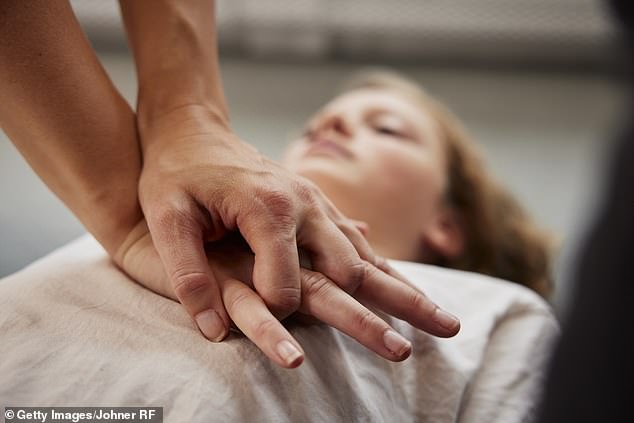She has had 12 number one albums in the UK alone and has been repeatedly ranked as the most successful artist in the world. Now, academics suggest that some of Taylor Swift’s biggest hits could be used to help save lives.
In fact, dozens of his songs could come to the rescue of people whose hearts suddenly stop beating.
That’s the suggestion of new research by cardiologists at Monash University in Melbourne, Australia, which shows that at least 50 songs by the American star have the perfect rhythm for performing CPR (cardiopulmonary resuscitation).
But if you’re not a Swiftie, there are dozens of other tunes with the right beat that work, from Nirvana’s Smells Like Teen Spirit to certain songs by Dua Lipa, Harry Styles, Dizzee Rascal, Billie Eilish, Aretha Franklin, and The Beatles.
CPR is the emergency procedure performed when someone has cardiac arrest, where the heart suddenly stops beating. It involves performing chest compressions immediately to temporarily take over the work of the heart and keep blood pumping through the body until the heart can be restarted with a defibrillator.
Academics suggest some of Taylor Swift’s biggest hits could be used to help save lives
According to the British Heart Foundation (BHF), more than 30,000 people die from out-of-hospital cardiac arrest in the UK every year, but rapid CPR and defibrillation can more than double a person’s chances of survival. But to be effective, chest compressions need to be delivered at a rate of between 100 and 120 per minute, mimicking the normal rhythm of the heart.
Counting accurately in a crisis can be difficult, and studies show that many, including doctors, often do so too slowly.
In 2008, a landmark study found that the Bee Gees’ 1970s hit Stayin’ Alive had the perfect rhythm for CPR: around 103 beats per minute.
The song was later used in a high-profile BHF television campaign, featuring footballer-turned-actor Vinnie Jones.
And in 2013, a Birmingham woman saved the life of a 67-year-old man who collapsed on a crowded bus when his heart stopped by following this advice. Sharon Thorneywork, a mother of three, recalled watching the TV advert featuring the Bee Gees hit and singing the tune out loud while pumping the man’s chest.
However, the Monash team wanted to see if Taylor Swift’s songs also fit and could be used to raise awareness of CPR among younger people who are more familiar with her work.
An analysis of his songs found at least 50 with the right beat, including his hits Love Story and I Don’t Wanna Live Forever.

CPR is the emergency procedure performed when someone has cardiac arrest, where the heart suddenly stops beating.
Professor Stephen Nicholls, director of Melbourne’s Victorian Heart Hospital and leader of the research, told the recent Swiftposium (an academic conference in Australia on the star’s cultural impact): “Taylor Swift’s music is some of the most popular and influential of this generation. As iconic songs lose relevance, it is crucial to identify new songs with optimal beats per minute for training.”
Research shows that most pop songs average 116 beats per minute. The BHF has created a Spotify playlist, called Lifesaving Beats, with more than 90 songs, including rock, hip hop and R&B, that music lovers can synchronise their CPR compressions to.
Dr Adrian Boyle, president of the Royal College of Emergency Medicine, told the Mail: “The use of music to encourage proper rhythm is well established and we encourage everyone to undergo training in how to perform CPR.”
Lizzie Moscardini, BHF Community Resuscitation Programme Manager, added: “It’s not just the pace that matters. It’s also important that they deliver compressions at the right depth to keep blood flowing.”
For advice on CPR and First Aid courses, visit sja.org.uk

